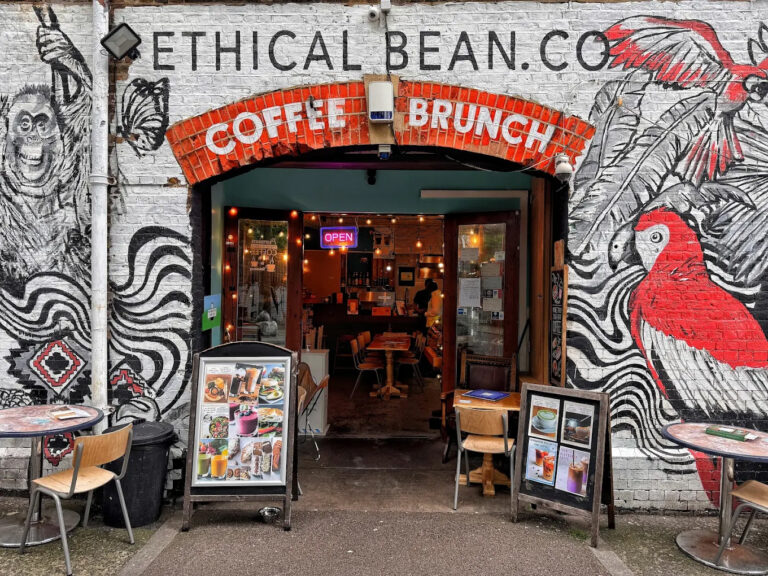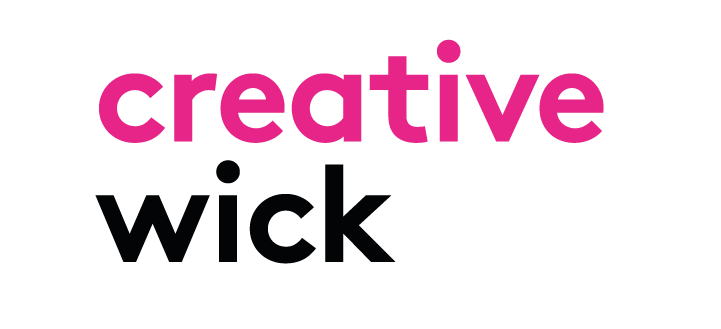
Review: Kokin – tuna meets fire at The Stratford
The new sushi restaurant now at the iconic skyscraper’s 7th floor and terrace
How did you come to be in Hackney Wick (HWFI)?
I’ve been here 12 years, having found out about the area by visiting an open studio. I ended up talking to an artist about how much they were paying at Mother Studios and couldn’t believe how cheap it was. It really made me think I could work here too, so I joined the waiting list.
It’s quite sad, actually. The studios used to be run by a lady called Jo, who went bankrupt. The landlords took over and did all sorts of good things to the building; they repainted the corridors and gave us hot water which was great. But they also tried to put the rent up hugely, so myself and others here led a campaign against that, and we won! Our rent was frozen for three years. There’s something really special about tenants rallying together to explain to their landlord they have nowhere else to go, but also cannot afford the rent increase, so what are you going to do to help us?
The last exhibition I did was before the pandemic at Stour Space, with my stepdaughter who is a ceramicist. I like to have exhibitions roughly every two years, as that way I’m not under a lot of pressure but I’m also not dead! It’s great to have something to work towards as well.
What changes have you seen in the area?
It’s funny how change can be so incremental that you hardly even notice it. There are some things that make me feel very sad. If I walk from here to Two More Years (formerly Stour Space), the blocks of flats I pass are so close together that there is hardly any natural light between them. There was an opportunity to build something wonderful, not just see how many people you can squeeze in and how much money you can make. It’s not all like that but there are too many examples of that here and around London.
But also, some things just don’t change. The view from my studio window hasn’t changed in the slightest since I moved here.

What aspect of HWFI do you love the most?
If I look out of my studio window I can see my favourite building, the London Aquatics Centre (designed by Zaha Hadid and Patrik Schumacher). I think it is so beautiful. It is meant to be modelled on a stingray, which is so appropriate for a swimming pool. The Olympic Park itself has just been a wonderful addition to the area. Sometimes you get the feeling that it is getting squeezed from both sides, but it’s still there.
What would you like the future to hold for HWFI?
It’s hard to know in these terribly uncertain times what is going to happen and how things will change. It’s a bit biblical to say that without a vision people will perish. But the extraordinary thing about this area is that there has never been a vision, there’s been a selection of interests. Maybe it’s no bad thing that all these things jostle up against each other. But capitalism is in such an awful state and it’s the leading influence in this area. It decides how land will be used, whether people can run their cafés and so on, so I’d like to see more stability for the people living and working here. It’s no good all these developers having empty properties. So many places have closed; Pearl and Mother most recently. It would be great for them to have a competition for local people to come up with ideas about what to do with these spaces.
Tell us your favourite HWFI hangouts, and why?
Being an artist is funny, we’re almost like hermit crabs. I come into my studio, shut the door and on I go. I used to always go to Stour Space for lunch and I am so happy to hear that the space is still open under new management (Two More Years), but what is equally as lovely is this hermit crab thing of being utterly reclused and surrounded by your work.
I really miss the old graffiti that used to cover the Lord Napier. They had some of the best graffiti years ago. It was witty and funny. Like at the top when it read ‘From Shithouse to Penthouse’. It was just fantastic.
What inspires you in your work?
I never went to art school. I’ve always been what is often called an ‘outsider’. Back in the 90s I had a job that was difficult and stressful. That’s when I started painting,
it was like a relief from the reality of my job. My work is always about play and just seeing what will happen during the process. The number one thing that interests me is how we get on with each other, how we get the best out of each other. For me, painting is the same kind of thing: how can I make these colours sit with each other and grow together and have some significance for me, if not for anybody else? It does end up being a frustratingly slow process though.
I’m hoping to do something around landscapes and climate change in the future. My eldest son’s job is all about climate change and bringing people together to share ideas about potential solutions. We talk about that a lot and so it has a big influence on me. What
he is trying to achieve is absolutely possible. But it is so dreadful underneath it all, the thought that the soil will erode in 30 years’ time. But at the same time, where there is life there is hope. So that’s spinning around in my head at the moment.
The main materials I use are loose weave cotton, paper and string and anything else that comes to hand. For our upcoming Open Studio I’m hoping to have a massive sale. I’m sure it’s true for a lot of artists, we accumulate works that we don’t want displayed again but are quite fond of and would love for them to be out in the world.
Who do you think is a true HWFI hero?
There used to be an artist here called Christina BanBan, she left around the beginning of the pandemic, but she is amazing and now her work is world famous. There are all sorts of wonderful people who come and go here, and it’s great to be able to meet all these different and talented artists.
How would you describe HWFI to someone who has never visited before?
I don’t think I would be able to rise to the occasion. People always talk about HWFI as a community. I’m not sure that I have ever completely believed in that. That’s not to say that there aren’t lots of communities here, because there are. But as an artist, we are so individualistic; you would not describe this corridor (in the studios) as vibrant – yet it can be, especially during open studios events! Sometimes in the winter, when it’s all dark outside and all the lights start going on in the flats, I almost want to wave at them. And it’s weird because in reality this is just where I work and that is where they live. But it isn’t like anywhere else, and that’s the truth of it. There are so many people doing different things here; whether it’s art galleries or community centres or people trying to grasp this notion of community spirit. It’s extraordinary that all those things come together, but it’s not always coherent.


The new sushi restaurant now at the iconic skyscraper’s 7th floor and terrace

Exploring the health advantages of belonging to something bigger than ourselves

Your timely reminder to go visit these amazing restaurants, bars and cafes this summer while we wait for better bridge access…
A joint venture in collaborative local media from:


In partnership with

Regulated by IMRESSS, the Independent Monitor for the Press CIC.
For more info on our complaints policy, or to make a complaint, visit FAQ.
